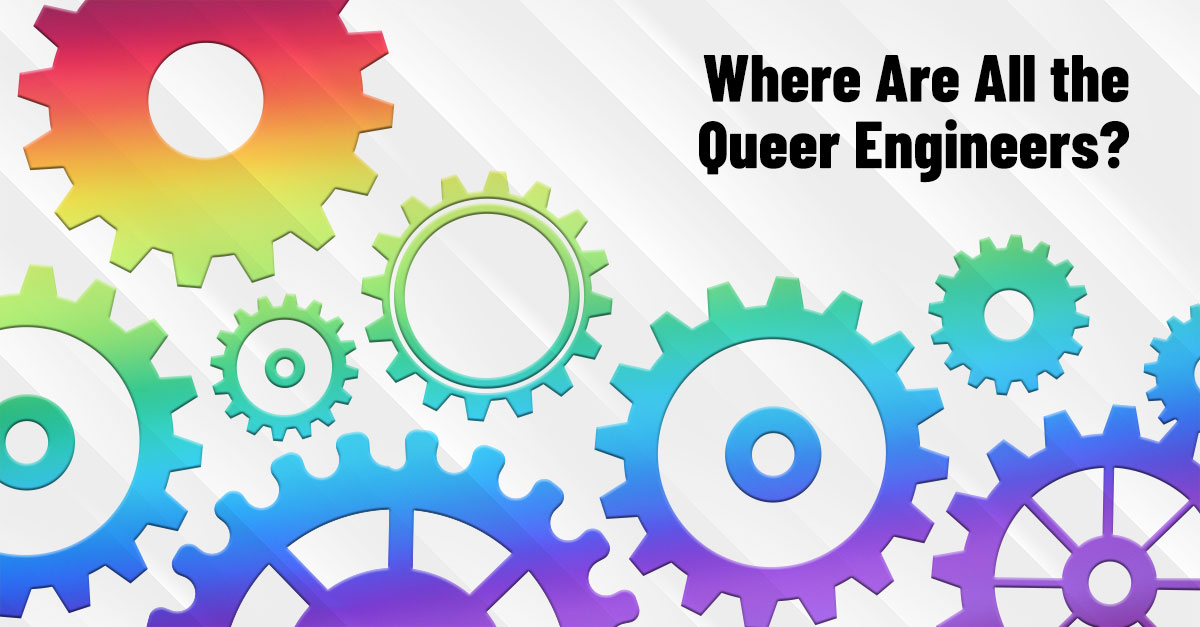
By Shivani Nathoo, EIT, and Kimberley Paradis
Shivani and Kimberley are members of OSPE’s EDIA Task Force. To learn more about OSPE’s task forces and advocacy initiatives, contact advocacy@ospe.on.ca.
In celebration of Pride Month, it’s crucial to discuss the experiences of 2SLGBTQI+ individuals in the engineering and broader STEM communities. Most major universities boast chapters of 2SLGBTQI+ student organizations, such as EngiQueers, oSTEM (Out in Science, Technology, Engineering, and Mathematics), and Queer Sphere. These groups provide a sense of belonging, fostering an environment of acceptance and camaraderie among Queer students in the STEM fields. These student organizations are often supported by faculty, who may run their own positive space committees or other initiatives to foster welcoming environments for Queer students, staff, and faculty. However, the transition from the campus bubble to the professional world is often marked by jarring changes and a lack of support.
Workplace Challenges: Where are the Queer Engineers?
Upon entering the workforce, 2SLGBTQI+ engineers often find a starkly contrasting environment to that of their school. The vibrancy of student groups fades into the background, leaving a void where 2SLGBTQI+-focused professional groups should be. Many organizations post broad statements of support during Pride Month, but do not take steps to foster an inclusive workplace. This leads employees to feel uncomfortable expressing their true selves at work and sets a disturbing trend, as new employees enter the workplace, see the lack of inclusivity, and remain closeted. A recent study on systemic inequalities for LGBTQ professionals in STEM, published in Science Advances,paints an alarming picture of this reality; Queer engineers often feel isolated due to the absence of a dedicated community or visible role models, and are sometimes afraid to come out at work for fear of bias or discrimination.
A Comparative Perspective: U.K. vs. Canada
While nations like the U.K. have established organizations such as InterEngineering to support 2SLGBTQI+ STEM professionals, Canada falls noticeably short in this regard. This absence raises questions about the inclusivity and representation of Queer professionals within the Canadian STEM community.
Tracking 2SLGBTQI+ inclusion in specific regions, such as Ontario, proves challenging due to a lack of comprehensive data. Many within the industry hesitate to discuss pronouns, rendering efforts to create inclusive work environments ineffective. Furthermore, the frequent absence of explicit targets for 2SLGBTQI+ representation and data collection contributes to a lack of focus on improving inclusivity.
Role Models and Representation: Isolation and Exclusion
It is no secret that thousands of 2SLGBTQI+ individuals died in Canada and the United States during the AIDS epidemic in the 1980s and 1990s. Many of the older 2SLGBTQI+ engineers who survived the AIDS crisis may choose to remain closeted at work due to fears of homophobia and discrimination affecting their work life and careers. Between the 1950s and 1990s, suspected 2SLGBTQI+ individuals were removed from their jobs in the Canadian Armed Forces and the federal public service. While these policies may have been limited to the government, they are indicative of the environment and the culture that many of today’s engineers grew up or started their careers in, one in which it was dangerous to be out at work. While the Canada of today is more accepting than the one of 30 years ago, these policies and environments have left a lasting impression on many individuals, making them reluctant to come out even in today’s work environment.
As a result, there are very few role models for the next generation of Queer engineers. A dearth of 2SLGBTQI+ role models in STEM can lead to feelings of isolation and exclusion among Queer engineers, undermining their professional growth and mental well-being. Role models serve as aspirational figures and tangible proof that success is achievable, regardless of one’s sexual orientation or gender identity. Their absence perpetuates a cycle of invisibility, leaving many 2SLGBTQI+ engineers feeling isolated. This isolation is one of the contributing factors leading to higher rates of mental health issues among young adults within the 2SLGBTQI+ community.
Moving Forward
As we commemorate Pride Month, we must also commit to tackling these challenges head-on. The path to inclusivity requires building robust support systems, fostering open dialogues about pronouns and identities, and emphasizing data collection to inform future diversity efforts. Most importantly, we must create a culture in which engineers feel safe being their true selves, and celebrate 2SLGBTQI+ role models who do come out to dispel the damaging effects of isolation and exclusion. By doing so, we can create a STEM industry where diversity is not merely an afterthought, but a cornerstone of innovation and progress.





